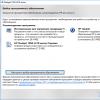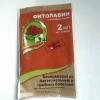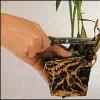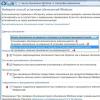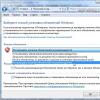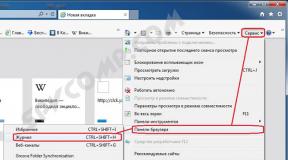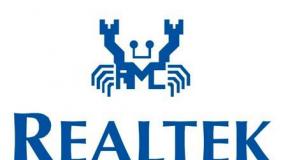Palpation of the small intestine. Study of the blind intestine. How is the intestine palpation
Palpation is the most important diagnostic intestinal research method. This method can only carry out a high-income doctor who knows all the subtleties and rules for carrying out the abdominal organs.
It is divided into 2 main types: superficial and deep. Each of these species allows to obtain quite important data on the patient's internal organs and their condition.
Palpation allows you to determine the presence of pain in any part of the intestine and put a preliminary diagnosis. Also with this method Diagnosis The doctor can determine the presence of different diseases. To confirm the diagnosis, it suffices to conduct some additional, instrumental research and tests.
Tasks inspection
The main tasks of the examination of the patient 3, namely:
- Detection of neoplasms that may be benign and malignant. When discovering any, additional procedures and instrumental research can be appointed, among which the most significant biopsy is.
- Changes in the structure of tissues. When palpation, the doctor can detect explicit changes in the structures of the bowel tissue, it may be looseness, thickening or thinning of any parts of the body, which indicates the disease.
- Inflammatory processes Also are easily determined by examining the patient by palpation.
- Surability - It is the most important sign of the alend. It is this symptom that can indicate which part of the intestine is amazed by the disease and how seriously the disease is. When determining the painful area, during the feeling of the abdominal cavity, the doctor can also put a preliminary diagnosis.
Thus, the tasks of this method of inspection are quite a lot. They also depend on the type of palpation (deep or superficial).
How is the Palpation of the intestine?
The intestinal palpation implies two types of tacking of the abdominal cavity: superficial and deep.
Surface palpation is always performed first. After her, the doctor conducts a deeper study of the intestine and its specific parts.
If the patient has painful sites, an important rule that follows the doctor is the following: feeling in no case cannot be started from a place that hurts. Usually the doctor begins with the opposite part of the abdomen.
Most often, palpation begins with a left ileal area and implies the intestinal feeling in a circle and counterclockwise.
Video about the tech palpation technique:
Surface method
With the surface method of palpation, the doctor needs to relax patient as much as possible. For this patient have in horizontal position With a slightly bent in the knees of legs. So the muscles of the press are most relaxed.
If the patient is still too tense, the doctor may distract it from the procedure forcing the breathing gymnastics.
Pasting occurs very smoothly and neatly. The area that hurts is tested in the last place, because if you begin the procedure from a painful area, the muscles of the front abdominal wall tense that it would not allow to carry out a complete inspection.
Deep
The deep type of palpation is carried out to diagnose serious changes in the structure of the intestine. Most. important condition profound profound type is a clear knowledge of the projection doctor internal organs on the front abdominal wall.
For the accuracy of diagnosis, when performing deep palpation, the doctor feels not only the intestines, but also other abdominal organs.
During deep palpation, the patient should breathe deeply, smoothly and measured, through the mouth. At the same time, the breathing should be diaphragmal. To facilitate the procedure, the doctor artificially creates folds of the skin on the patient's stomach and after shifts the palm in the required position.
When palpation of intestines, the doctor always keeps the following priority of organs:
- sigmoid colon;
- cecum;
- ascending and descending;
- rimbar transverse intestine.
With a deep-type palpation, the doctor necessarily determines the diameter, the nature of the mobility, the rice and painful sections of all parts of the intestines.
Small intestine
Pains to the right of the navel most often talk about the disease fine intestine. Palpation allows you to determine the state thin gut. Most often both types of prickness are used, however, it is the deep and sliding type of palpation is more efficient.
With the right approach to the diagnosis and professionalism of the doctor to hold this procedure Not difficult.
Also, the study of this sector of the intestine is not painful if the patient does not suffer from any specific disease. Pains for tackling the small intestine can also talk about inflammation of mesenterial lymph nodes.
Colon
Palpation of the large intestine allows you to explore the pathology of the abdominal cavity, assess their size, position and shape.
Thus, the conditions for conducting palpation are actually the same as during the study of the superficial area of \u200b\u200bthe abdomen. However, in this case, the doctor must be extremely focused and attentive, so as not to lose sight of important details.
Sleepy
The blind intestine is located in the right iliac region and has a slash. In fact, at a right angle, it crosses the navel-ease line.
Palpation should be carried out in the right iliac region. Doctor's palm lies at the front axle. The fingers are directed toward the navel and are in the projection of the blind intestine. When feeling skin, the skin fold is shifted to the direction from the intestine.
According to generally accepted standards, the blind intestine should be soft and smoothly elastic, and also have a diameter of two transverse fingers.
Cross-rim
The intestine is palpable exclusively in the umbilical area at the same time with two hands. Palpation is carried out through the straight muscles of the abdomen.
For palpation, the doctor puts palms on the front abdominal wall so that the fingertips are located at the navel level. Skin fold must be moved towards the epigastric area.
Normally, the transverse colon has an arcuate form that is curved down the book. The ink diameter does not exceed 2.5 centimeters. It is painless and easily shifted during palpation. In the presence of any deviations, you can detect some soreness, expansion, seals, and pests.
Sigmoid
The sigmoid gut is located in the left iliac area of \u200b\u200bthe abdomen. It has an oblique move and almost perpendicularly crosses the navel-ease line. The doctor's brush should be so that the base of the palm is on the umbilical area. The tips of the fingers should be directed towards the front axle left ileal bone.
Thus, a palpable brush should be in the projection of the sigmoid intestine.
The sigmoid gut should be forgiven for 15 centimeters. It should be smooth, smooth and moderately dense. The gut diameter should not exceed the thumb.
Feeling painless, the intestine does not bother and rarely peristals. In the presence of deviations, palpation is carried out more difficult and slowly.
Straight
The study of the rectum is produced rectally in the knee-elbow position of the patient. It is preferable to inspect after defecation, as this may cause some difficulties.
For severe condition The patient examination is carried out lying on the left side with the legs to the belly.
Initially, the doctor examines the rear pass and the skin of the crotch buttocks, as well as the sacring-coccular region. It helps to detect cracks rear Passage, hemorrhoidal nodes and more. After that, the patient needs to be asked to fit.
Then proceed to the finger study of the intestine. The index finger of the right hand is injected with rotational movements through the anal hole in the rectum. Thus, the tone of the sphincter is determined and the presence of tumor formations.
The doctor does not detect any seals or loose sections of the gut tissue. Inflammatory processes, expressed by strong swelling or increasing part of the intestines, are not observed.
An important aspect is the location of the intestine. The correct location of all of its parts indicates the absence of a ward of intestines or pathological processes. Also at deep palpation, the doctor does not reveal seals and neoplasms.
In the normal state of the organ, the doctor may try to feel the blind, sigmoid, transverse hatch. The downward and upstream divisions of the large intestine are inconsistently palpable.
As for the sigmoid intestine, then in normal and healthy state This part of the intestine is tested on a length of 15 cm. Its thickness does not exceed thickness thumb. The blind intestine in the norm is tested as a soft, smooth cylinder with a diameter of no more than two transverse fingers.
The norm is that when pressing the blind intestine slightly urchit. The transverse colon has a soft, not loose structure, seals and any formations are absent.
Palpation of the rectum occurs by rectal finger research. Normally, the absence of inflamed tissues, tensions of tissue structures and hemorrhoids.
Palpation of a blind intestine. Palpirated 78-85% of people , in the right iliac area. Her long is located space (right from top to bottom) on the boundary of the middle and outer third of the line connecting the navel and the right upper front axle of the ileal bone.
The technique of palpation of a blind intestine (Fig. 55, c) is similar to that when palpation of the sigmoid intestine. The blind intestine is palpit four semi-bent folded together with fingersright hand. They are installed parallel to long gut.
Surface movement of fingers towards the navel create skin fold . Then gradually immersing fingers in abdominal cavity, during the exhalation, reach the back abdominal wall, slide on it, not flexing your fingers perpendicular to the intestine, towards the right front of the ileal bone and rolled through the blind intestine.
If it was not possible to put it right away, the palpation should be repeated. At the same time, the wall of the blind intestine from a relaxed state under the influence of irritation turns into a voltage state and compacted (due to the reduction of the muscular layer of the intestine). At the strain of the abdominal press you can teres I. big finger Free left hand Press around the navel on the front abdominal wall And continue the study of the blind intestine with the fingers of the right hand. This tension of the abdominal wall in the area of \u200b\u200bthe blind intestine is transferred to the neighboring.
Fine The blind intestine is in shape smooth, painless, slightly rumbling cylinder, 3-5 cm wide, moderately elastic and weakly movable, With a small pear-shaped book expansion. The mobility of the blind intestine is normal 2-3 cm .
Under excessive mobility, it can be observed seizures of sudden pains with phenomena of partial or complete obstruction due to the beggars and crop. Reducing the intestinal mobility or its complete immobility can be caused by spikes that have arisen after the inflammatory process in this area.
The blind intestine is larger than sigmoid, is subject to different changes. Consistency, volume, shape, pain during palpation and acoustic phenomena (rumbling) of a blind intestine depend on the state of its walls, as well as on the number and quality of content. Surability and loud rumbling at palpation blind intestines are observed in case inflammatory processes It is accompanied by a change in its consistency. In some diseases (tuberculosis, cancer), the intestine may acquire a cartilage consistency and becomes uneven, buggy and low-luminous. The volume of the intestine depends on the degree of filling it with liquid content and gas. It increases when accumulated kALOV MASS. and gases in the case of constipation and decreases with diarrhea and the spa of its muscles.
When examining the right iliac region, location of the blind intestine healthy man No deviations are noted, it is symmetrical to the left iliac region, does not empty, does not spare, not visible peristalsis.
In pathological conditions The blind intestine is possible swelling at the site of its localization or closer to the navel, which is especially characteristic of the obstruction of the intestine. In such cases, the gut acquires a sausage shape and is not in a typical location, and closer to the navel.
Peristaltics of a blind chuck Even with its overflow and bloating is difficult, it is only palpatory.
Percussively normal above the blind intestine Always heard tympanite. With its sharp bloat, the tympanitis becomes high, when overflowing with the masses, the defeat of its tumor will be revealed to the dutch-tympanic sound.
Palpation of blind gut
Palpation of blind gut It is carried out in the two positions of the patient - in the usual position on the back and in the position on the left side. To the study on the left side, the doctor resorts when the need arises to clarify the displacement of the blind intestine, the localization of the pain in palpation, to differentiate the pathological state of the blind intestine and neighboring organs.
When palpation of a blind intestine, as well as a sigmoid intestine, it is necessary to estimate its properties such as:
- localization;
- thickness (width);
- consistency;
- surface nature;
- mobility (displacement);
- peristalsis;
- rumbling, splash;
- soreness.
Palpation principles of a blind intestine The same as the sigmoid gut. The blind intestine is located in the right iliac region, its vertical bend to 6 cm, the long axis of the intestine is located on the right and from top to bottom and left. Typically, the blind intestine lies on the boundary of the middle and outer third of the right ugly-oave line, it is approximately at a distance of 5-6 cm from the right front of the upper oyster of the ileal bone (Fig. 407).
A. Scheme of topography of the blind intestine. The dotted line is indicated by the dumping and isgered line. The blind intestine lies at the level of the middle and outer third of this line.
B. Position of the doctor's hand during palpation. Fingers are installed at a distance of 5-6 cm from the upper axis of the ileal bone parallel. Finger movement - out
Palping 4 fingers are installed at the specified point parallel to the long axis of the intestine in the direction to the navel, the palm should touch the ridge of the iliac. The fingers should be slightly bent as the palpation of the sigmoid intestine, but not very pressing each other. After the skin offset towards the navel and immersion of the fingers deep into the back of the wall (to the bottom of the iliac yam), taking into account the patient's breathing, the sliding movement of the fingers outwards is made. If the intestine is not palpable, then the maneuver is repeated. This is done because the intestine with a relaxed muscles may normally be palpable. The mechanical irritation of palpation causes its abbreviation and seal, after which it becomes tangible, although not always.
Normal blind intestine palp About 80% of healthy people. It is perceived as a smooth soft cylinder with a thickness of 2-3 cm (less often 4-5 cm), painless, slightly grappling, with a flat surface, with a shift rate of up to 2-2.5 cm, with a small pear-shaped blind expansion of the book (actually blind intestine). The lower end of the blind intestine in men is usually at the level of i cm above the line connecting the upper front axle, in women at its level. In some cases, a higher location of the blind intestine is possible with a displacement of it up to 5-8 cm. It is possible to pinch the intestine with the help of the so-called bimanual palpation. The solid foundation to which the intestine will serve will serve as the left hand of the doctor, lining across the torso from the back of the edge of the ileal bone. The actions of the palpant hand are similar to conventional palpation, the installation of the fingers should be transformed above the zone of the normal location of the intestine. Touching the blind intestine, we usually palpitate and the initial part of the rising intestine at a distance of 10-12 cm. All this intestinal segment is called "Typhlon".
If the palpation of the blind intestine fails Because of the muscle tension, it is useful to use the pressure of the abdominal wall with the left brush of the doctor (thumb and tenar) in the navel on the right. This achieves some relaxation of the muscles of the abdominal wall. In case of unsuccessfulness of such a reception, you can try to pinch the intestine in the position of the patient on the left side. Palpation techniques are ordinary.
In a healthy person blind intestine During palpation, it can shift laterally and medially a total of 5-6 cm. Due to the long mesentery, it can be located closer to the navel and even further (the "wandering blind intestine"). Therefore, if it is not palpable in a normal place, you need a palpator search with a shift point of palpation in various directions, especially the navel. With the help of pressing reception of the left hand, the doctor sometimes manage to return the intestine to the usual place.
Pathological signs identified during palpation of a blind intestinemay be the following:
- The blind intestine can be shifted up or toward the navel due to innate features
- or due to the elongated mesentery,
- and also due to the insufficient fixation of the intestine to the rear wall due to the strong tension of the fiber behind the blind intestine.
Wide blind gut (5-7 cm) can be with a decrease in its tone, as well as when it is overflowing with the forces mass due to the violation of the towbering ability of the thick bowel or the occurrence of obstruction below the intestine.
Narrow, thin And a compacted blind intestine with a pencil and even tightly palpped with a long starvation of the patient, with diarrhea, after receiving the laxatives. This state of the intestine is due to spasm.
Tight blind intestineBut not wide and not crowded happens with its tuberculous defeat, often it also acquires the bugness. A dense, increased intestine becomes with a cluster of dense potassium masses, during the formation of honeystones. Such a gut is more likely to be buggy.
Cheep surface of a blind intestine It is determined in its neoplasms, clustering in it with hiding stones, with tuberculous lesion of the intestine (tuberculous tyiflite).
Displacement of a blind intestine Determined by lengthening mesentery and insufficient fixation to the rear wall. Restriction or absence of intestinal mobility arises due to development adhesive process (Peritiflitis), which is always combined with the appearance of pain in the position of the Nazis on the left side (the intestinal shift is due to the gravity and tension of the adhesions), as well as the occurrence of pain when the intestine palpation in the same position.
Reinforced Peristalistic Blind Determined in the form of alternate sealing and relaxation under the palpable fingers. It happens if there is a narrowing below the blind intestine (scars, tumors, compression, obstruction).
Loud rumbling, Palpation splash It indicates the presence of gas and liquid content in the blind intestine, which happens when inflammation of the small intestine - enteritis, when liquid chims and inflammatory exudate enters the blind intestine. The rumbling and splash in the blind intestine is marked with typhoid typhoid.
Lightly painful sickness When palpation is possible and normally, pronounced and significant - characteristic of inflammation of the inner shell of the intestine and for inflammation of the peritoneum covering the intestine. However, pain during palpation of the iliac region may be due to the involvement in the process of neighboring organs, such as appendix, ureter, ovary in women, skinny and ascending intestine.
I Palpation Moment: Installing the Doctor's Hands. The brush of the right hand is installed on the front abdominal wall in accordance with the topography of the palpable organ.
II Palpation Timing: Skin Folding. During the inhalation of the patient slightly bent fingers form a skin fold, shifting the skin to the side opposite to the direction of the subsequent slip by the intestine.
III Palpation Moment: Diving Hand deepwheck belly. During the exhalation of the patient, when the muscles of the front side wall gradually relax, they strive to immerse the tips of the fingers deep into the abdominal cavities as possible, if possible, until its back wall.
IV Palpation Moment: Slide by body. At the end of the exhalation, the glowing movement of the brush of the right hand proves the organ, pressing it to the back wall of the abdominal cavity. At this point, they constitute a tactile impression on the peculiarities of the organ.
Normally, the Sigmid intestine is tested for 15 cm in the form of a smooth, moderately dense tight diameter with a thumb. It is painless, does not bother, sluggish and rarely peristals, it is easily shifted during palpation within 5 cm. When lengthening the mesentery or the very sigmoid intestine (Dolichosigma), it can be palpable "much more medially than usual.
33. Palpation of a blind intestine. The sequence of the doctor's actions during its execution. The characteristic of the blind intestine is normal and its changes in pathology.
I Palpation Moment: The doctor's right hand has in the right iliac area so that the tips of the semitched fingers were 1/3 of the distance from Spina Iliaca Anterior Superior to the navel.
II moment of Palpation: During the inhalation, the movement of the hand explored towards the navel form a skin fold towards the navel.
III Moment Palpation: During the exhalation, using the relaxation of the abdominal press muscles, they strive to immerse the fingers of the right hand to the abdominal cavity as possible until it reaches its back wall.
Iv Moment Palpation: At the end of the exhalation, they make a moving movement E in the direction of the right Spina Iliaca Anterior Superior and get a palpator view of the blind intestine.
Normally, the blind intestine has a shape of a smooth, soft elastic cylinder with a diameter of 2-3 cm. It is somewhat extended by a book where the blinder ends with a rounded bottom. The intestine is painless, moderately moving, urchit when pressing.
34. Palpation of the 3rd sectors of the colon. The sequence of the doctor's actions during its execution. The characteristic of the colon is normal and its changes in pathology.
The ascending and downstream seeds of the colon are tested with a bimanual palpation. To create a solid base, the brush of the left hand is placed on the lumbar region on the right and left. The fingers of the right hand are set perpendicular to the axis of the ascending or downstairs. Slipped to the abdominal cavity fingers are carried out by the dust. Palpation of transverse colon is carried out by 2-3 cm. right handFirst, after installing it for 4-5 cm to the right of the midline, then the left or bimanually - by setting the fingers of both hands on the right and to the left of the midline. As for the profits of the ascending and downstream, on all of its length, these departments of thick guts are rarely told and amenable to palpation with difficulty, in view of the fact that they are located on a soft lining, which prevents feeling feeling. However, in cases where these departments were changed due to any pathological processes in them (inflammatory thickening of walls, ulcers, developed neoplasm, polyposis) or lower, for example, with a narrowing in the FL region. Hepatica or S. R., which entails hypertrophy and thickening the wall of these departments, applied by general rules Palpation makes it possible not only to easily try these coli departments, but also by characteristic palpator data to diagnose the corresponding process.
35. Inspection of the liver area. Palpation of the liver. Sequence of the doctor's action during the palpation of the liver. Characteristics of the edge of the liver and its surface. Change liver in pathology (determined physical). The clinical value of the detected changes.
Protecting the liver is produced according to the rules of deep sliding palpation on the samples. The doctor is located on the right of the patient lying on the back with his hands stretched along the body and bent in his knees put on the bed. The prerequisite is the maximum relaxation of the patient's abdominal wall muscles with deep breathing. To enhance the liver excursion, you should use the pressure of the palm of the doctor's left hand to the lower finishes of the front-breast wall on the right. Palping right hand lies on the front abdominal wall below the edge of the liver (which should be pre-defined perfectly); At the same time, the tips of the fingers (they should be positioned along the estimated lower edge) immersed in the abdominal deploy synchronously with the patient's breath and with the next deep breath are found with the lowering the edge of the liver, from under which they express.
With pronounced ascite, the usual percussion and the palpation of the liver is difficult, therefore, the method of running palpation is used, while detecting a "floating ice floating" symptom. To do this, the right brush is placed in the mesogastric area to the right of the navel and the thick movements of the fingers of the brush move up to the sensation of a dense displaced organ under the fingers. With this reception, you can get an idea of \u200b\u200bthe peculiarities of the edge of the liver and its surface.
With the help of palpation of the liver, first of all estimate its lower edge, the density, the presence of irregularities, sensitivity. Normally the edge of the liver when palpation of soft consistency, smooth, pointed (thin), painless. The displacement of the lower edge of the liver can be associated with the omission of the organ without increasing it; In this case, the upper boundary of the liver stupidity is shifted.
Palpation of belly has a large diagnostic value. It is carried out as follows - the sigmoid intestine as the most permanent landmark and a more affordable organ for palpation is pretty. Next, go in feeling a blind intestine, then cross-bonded. Ascending and downward intestines can be palpation with great difficulty.
When palpation, the examining fingers are carefully immersed and pressed the conducted organ to the rear abdominal wall; Sliding movements are determined by contours, density and possible formations, deviations.
As a rule, when ticking, a sigmoid gut makes the impression of a smooth, dense, rolling, irregular and painless cylinder into a finger thickness. Its thickness depends on the condition of the walls, filling with gases and fecal masses. With inflammatory infiltration, the wall is thicken; When overflowing with solid fecal masses, a sigmoid intestine becomes clear, and deep ulcerative processes make it buggy and uneven. With an acute inflammatory process in a sigmoid intestine, the latter acquires a more dense consistency and becomes painful. The density of the overflowing gases and the liquid content of the sigmoid gauge is reduced; When educating inflammatory battles around it, normal mobility is lost. In case of spasm, the intestine is torn in the form of a heavy cord. The rumbling in the sigmoid intestine occurs when he received from the upper departments of liquid contents or with a long delay in it feces; The latter entails irritation of the walls with the release of a significant amount of mucus (false diarins).
The blind intestine is nesting in the form of a smooth in two fingers, a slightly rigging, painless and moderately moving (2-3 cm) cylinder. It mobility can be pathologically enhanced (movable blind intestine - COECUM MOBILE). The consistency is compacted during coprostase, stretching with gases, acute and chronic inflammation, but the walls remain smooth and smooth. In the presence of a buggy blind intestine, it is necessary to think about deep penetrating the walls of tuberculous, syphilitic, dysenteric origin, about the tumor. The volume and shape of the blind intestine depend on the quantity and quality of its contents. In the thick contents and normal number of gases, the intestine will not rush, with liquid content, combined with a significant amount of gases, a loud rumba occurs, most often with enteritis, tiflites. The presence of pain during palpation of a blind intestine always indicates a pathological condition.
After palpation of a blind intestine and a very rarely, a heart-shaped outflow transfers to feeling of less affordable colon departments - ascending, transverse and downstairs. The transverse border is tested only with chronic inflammation of it. Consistency, volume and form depend on the tone and the degree of voltage of its muscles, as well as the properties of the content. Any inflammatory process, especially peptic, in the presence of inflammatory infiltration causes serious changes in the transverse intersection. It changes its shape and consistency, the walls are thicken, under the influence of the ulcer process, the musculature is reduced stronger, its configuration changes.
In chronic colitis and pericolitis, the intestine becomes a dense, abbreviated, painful during palpation, sometimes buggy (in the area of \u200b\u200bthe ulcers). With pericoliths, it loses both respiratory and active, and passive mobility due to the resulting battles.
When the belly palpation, the intestinal tumor can be adopted, which is often mixed with the tumor of neighboring organs. The tumors of the transverse and blind intestine are distinguished by known mobility. The tumors of the transverse border and its bends are moved at the act of breathing, while tumors below the navel are usually fixed.
With enterocolitis, the belly feeling causes a rumbling and the noise of the splash in the navel area.
Thin intestines are predominantly near the navel. With enteritis, there is painless diarrhea, and when palpation of thin and thick intestines - a rumbling. When colitis, a casczyce-shaped mucosa chair, abdominal pain, and with palpation painful, compacted, extended and slightly ricking thick intestine.
Palpation of the abdomen is complemented by a finger study of the rectum, reorganososcopy and radiographic studies. With all the intestinal diseases, the rectal study should be carried out in order not to miss the rectal cancer, syphilitic structures. The finger study in combination with reorgano-block allows you to establish the presence of inflammatory processes, cracks, fistula, tumors, hemorrhoids. In addition, the impression of the sphincter tone, width and filling of the ampoule of the rectum is created. In some cases, the palpation of neighboring organs is very useful - the bottom of the pelvis, Douglas of space, cervical and bottom bladder, men - prostate gland and seed bubbles, in women - the uterus and her appendages. With a finger study, you can find a straight and sigmoid tumor, in women the uterus tumor and the ovary cyst, which are directly adjacent to the rectum, squeeze or move it to the side.
The finger study sometimes allows us to find out the nature of the constipation. It is known that in normal conditions, the ampoule of the rectum is empty, and in chronic constipation on the soil of the innervation of the muscular apparatus, it is overflowing and expanded.



